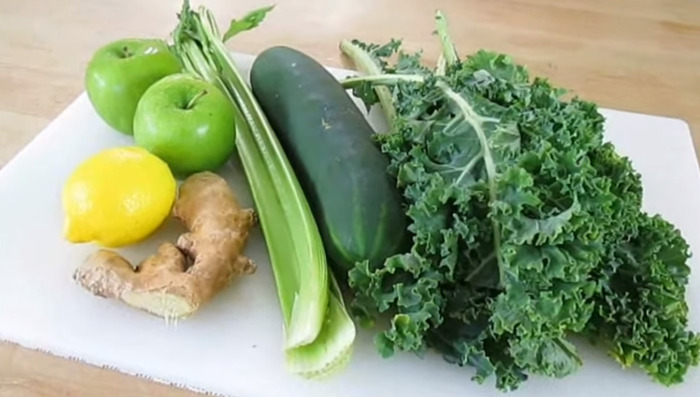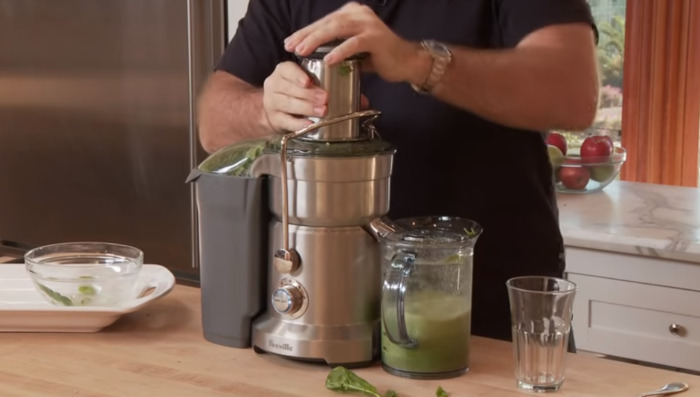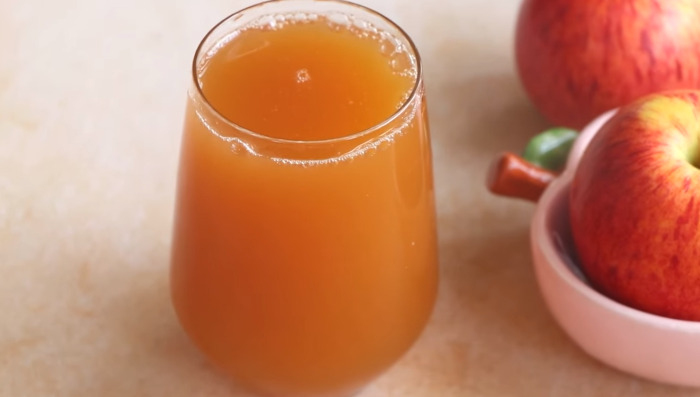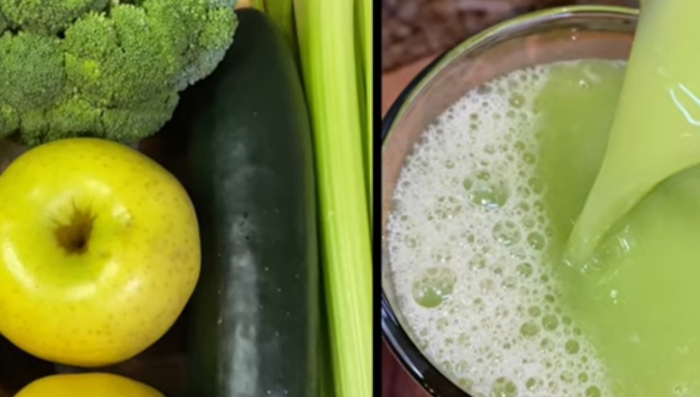Green juice, a vibrant blend of green vegetables like kale, spinach, and celery, often sweetened with fruits, has become a staple in many kitchens. As a kitchen expert, I can tell you that this beverage is more than just a trend; it’s a nutrient-packed way to boost your day. Whether you’re a health enthusiast or just looking to add more greens to your diet, green juice offers a convenient solution.
It’s rich in essential vitamins, minerals, and beneficial plant compounds, supporting heart health, digestion, and immunity. But it’s not all sunshine and rainbows; there are considerations to make, such as sugar content and fiber loss. Whether you’re juicing at home or buying from a store, understanding these aspects can help you make the most of this nutritious drink. Let’s dive into the world of green juice, exploring its benefits, potential downsides, and how to incorporate it into a balanced diet.
What are the mean green juice benefits?
The mean green juice offers a range of physical and psychological benefits. Its anti-inflammatory properties, hydration effects, digestive support, immune strengthening, and skin-enhancing qualities can contribute to overall well-being.

1. Reduction of Inflammation
Green juice, particularly when made with anti-inflammatory ingredients like kale and spinach, can play a significant role in reducing overall inflammation. From a psychological perspective, chronic inflammation is often linked to stress and anxiety. Consuming green juice may help alleviate these symptoms by targeting the root cause.
2. Enhanced Cellular Hydration
The right balance of water and minerals in green juice can increase your body’s overall hydration. Proper hydration is essential for cognitive function, mood stability, and reducing cravings that might lead to unhealthy eating habits.
3. Digestive Health Improvement
Fresh green juice is rich in enzymes that improve digestive health. Since a significant part of the immune system resides in the digestive tract, enhancing digestion can lead to a stronger immune response. This connection between the gut and the mind is a key aspect of psychological well-being.
4. Immune System Strengthening
Green juice drenches the body in nutrients like chlorophyll, which strengthens the immune system. A robust immune system can contribute to a sense of well-being and resilience, vital for mental health.
5. Skin Health Enhancement
The hydration and gut-healing benefits of green juice can lead to clearer skin and a healthy glow. Appearance often affects self-esteem and confidence, making this an indirect but valuable psychological benefit of green juice.

6. Potential Risks and Considerations
While green juice offers numerous benefits, it’s essential to be aware of potential downsides. For example, excessive consumption may lead to kidney issues due to oxalates, and the lack of fiber might affect blood sugar control. Moderation and balance in the diet are key to reaping the benefits without the risks.
Why should you keep sugar content low in mean green juice?
Keeping sugar content low in mean green juice is essential for several reasons, and as a kitchen expert, I can’t stress this enough.
1. Nutrient Density Preservation
Green juice is all about packing in the nutrients from fresh vegetables and herbs. Adding too much sugar can dilute these nutrients, reducing the overall health benefits of the juice. You want to taste the greens, not mask them with sweetness.
2. Blood Sugar Control
If you’re looking to maintain stable blood sugar levels, especially if you have diabetes or other related conditions, keeping your sugar content low is crucial. High sugar content in green juice can lead to unwanted spikes in blood sugar levels, negating the health benefits.
3. Weight Management
Green juice is often consumed as part of a healthy lifestyle and weight management plan. Adding excess sugar can increase the calorie content, making it counterproductive to weight loss goals.

Related Read: Green juice recipe for weight loss
4. Avoiding Inflammation
Sugar is known to cause inflammation in the body. Since one of the primary benefits of green juice is reducing inflammation, adding sugar would be contradictory to this goal.
5. Enhancing Flavor, Not Masking It:
As a culinary enthusiast, I believe in letting the natural flavors shine. Adding too much sugar can overpower the subtle flavors of the vegetables and herbs, taking away from the unique taste experience that green juice offers.
6. Kidney Health Consideration
Excessive sugar, especially when combined with the oxalates found in green vegetables, may contribute to kidney issues. Moderation in sugar content helps in avoiding such health risks.
Recipe to make healthy mean green juice?
Ingredients:
Creating a mean green juice that’s both nutritious and delicious requires a careful selection of ingredients. Here’s a list of essentials, crafted with a kitchen expert’s touch:

- Organic Cucumbers: For hydration and a mild flavor.
- Celery Ribs: Adds a savory touch and essential minerals.
- Broccoli Stem: Utilize the stem for nutrients without overpowering the taste.
- Green Kale Leaves: Rich in vitamins A and K; start with a few if new to juicing.
- Organic Apple or Pear (1/2): For a hint of natural sweetness without added sugar.
- Fresh Ginger (Optional): A 1 to 2-inch knob, peeled, for a zesty kick.
- Organic Lemon (1/2): Peeled before juicing or squeezed at the end for a citrusy freshness.
- Water-Filled Green Veggies: Such as spinach; add volume without too much sugar.
- Avoid Excessive Fruit: To keep sugar content low and maintain the green juice benefits.
Remember, the key to a perfect mean green juice is balancing flavors while keeping the nutrient content high. Feel free to experiment with these ingredients, but always keep the core principles of healthy juicing in mind.
Equipment:
Creating the perfect mean green juice requires not only the right ingredients but also the proper equipment. Here’s a list of essential tools, each serving a specific purpose in the process:
- Juicer: A quality juicer like the Breville Juice Fountain™ Multi-Speed is essential for extracting juice from vegetables and fruits efficiently.

- Cutting Board: A sturdy surface for chopping and preparing the ingredients.
- Sharp Knife: For precise cutting and peeling, ensure that you get the most out of each ingredient.
- Peeler: Especially for citrus fruits like lemons, to avoid concentrating essential oils that might upset the stomach.
- Measuring Cups and Spoons: For accurate portion control, ensuring the right balance of flavors and nutrients.
- Strainer (Optional): If you prefer smoother juice, a strainer can remove any remaining pulp.
- Glass or Jar with Lid: For serving and storing the juice, maintaining freshness.
The right equipment not only makes the process more efficient but also enhances the enjoyment and benefits of the juice. Investing in quality tools can make a significant difference in your juicing experience.
Instructions:
By following the below-mentioned step-by-step instructions, you’ll create a nutritious and delicious mean green juice that’s packed with vitamins and minerals. Enjoy the refreshing taste and the health benefits that come with it!
Step 1: Prepare the Ingredients
Before you start juicing, make sure all your ingredients are washed and ready. If you’re using organic cucumbers, celery, broccoli stems, kale, apple or pear, and lemon, you’ll want to ensure they’re clean and free from any dirt or debris. Peel the lemon before juicing, and if you’re using ginger, make sure it’s peeled as well. Cut the ingredients into sizes that fit your juicer.
Step 2: Set Up the Juicer
Choose a quality juicer like the Breville Juice Fountain™ Multi-Speed, and make sure it’s clean and ready to use. Place a glass or jar under the spout to catch the juice, and have a strainer handy if you prefer a smoother texture.
Step 3: Juice the Ingredients
Start by juicing the cucumbers, followed by the celery, broccoli stem, kale, apple or pear, ginger (if using), and lemon. Push each piece through the juicer, cutting it in half if necessary. Add a few ice cubes if you want your juice cold.

Step 4: Mix and Taste
Once all the ingredients are juiced, give it a good stir to combine all the flavors. Taste the juice and adjust the flavors as needed. If it’s too “green” for you, you can add a little more apple or pear for sweetness.
Step 5: Serve or Store
Pour the juice into a glass and enjoy it right away, or store it in a jar with a lid in the refrigerator. The nutrients will begin to degrade once exposed to oxygen, so it’s best to drink it as soon as possible.
Step 6: Clean Up
Cleaning up is an essential part of the process. Rinse the juicer parts immediately to prevent any residue from drying and sticking. Follow the manufacturer’s instructions for cleaning your specific juicer model.
Mean green Juice Nutritional profile:
- Vitamins and Minerals: Rich in vitamins A, K, and C, thanks to ingredients like Swiss chard, kale, and wheatgrass. These vitamins support overall health, including vision, blood clotting, and immune function.
- Iron: Wheatgrass in the juice provides a good amount of iron, essential for oxygen transport in the blood.
- Low in Fiber: Juicing removes most of the fiber from fruits and vegetables, so it’s essential to balance your diet with whole fruits and vegetables as well.
- Hydration: Ingredients like cucumber and celery are high in water content, aiding in cellular hydration.
- Oxalates: Green vegetables contain oxalic acid, which can bind to minerals. Consuming in moderation is key to avoiding potential health issues like kidney stones.
- Sugar Content: Depending on the fruits used, the sugar content can vary. Keeping it low is vital for maintaining the nutritional profile and avoiding blood sugar spikes.
- Chlorophyll: Known as liquid sunshine, chlorophyll in green juice strengthens the immune system and helps control inflammation.
- Enzymes: Fresh green juice contains enzymes that improve digestion.
- Antioxidants: Packed with beneficial plant compounds that reduce inflammation and may lower the risk of chronic diseases.
- Calories: Generally low in calories, but this can vary depending on the specific ingredients used. Always be mindful of portion sizes.
- Potential for Kidney Issues: High concentrations of oxalates can lead to kidney problems if consumed excessively.
By understanding the nutritional profile of mean green juice, you can make informed choices and enjoy this healthful beverage as part of a balanced diet.
How Long Does Mean Green Juice Last?
Mean green juice, like other fresh juices, has a limited shelf life. Once you’ve made it, it’s best to consume it right away. The nutrients in the juice begin to degrade once exposed to oxygen, and the flavor can change as well. If you need to store it, make sure to place it in an airtight container and refrigerate it immediately.
In the fridge, mean green juice can last up to 48 hours. However, it’s essential to note that the longer it sits, the more the nutritional value decreases. If you’re planning to store it, using a high-speed blender or a masticating juicer that minimizes oxidation can help preserve the nutrients longer.
If you notice any off smells, changes in flavor, or visual signs of spoilage, it’s best to discard the juice. Freshness is key to enjoying the full benefits of mean green juice, so always aim to drink it as soon as possible after preparation. If you need to make it ahead of time, consider freezing individual portions and thawing them as needed. This method can extend the juice’s life for up to a month without significant loss of quality.
Conclusion:
Mean green juice is more than a trendy beverage; it’s a nutrient-packed addition to a healthy lifestyle. From its rich vitamin and mineral content to its potential health benefits, such as reducing inflammation and supporting digestion, this juice offers a lot. However, it’s essential to keep sugar content low and be mindful of potential drawbacks like low fiber content and oxalate concentration. With the right ingredients, equipment, and step-by-step instructions, you can easily prepare mean green juice at home.
Remember, freshness is key, so consume it promptly or follow proper storage guidelines. Whether you’re new to juicing or a seasoned pro, mean green juice can be a delightful and nourishing part of your diet. Enjoy it in moderation, and don’t forget to balance it with whole fruits and vegetables for a well-rounded nutritional profile.
FAQs:
How many times a day should I drink Mean Green juice?
Drinking mean green juice can be a refreshing way to boost your nutrient intake, but moderation is key. It’s best to limit consumption to once a day, preferably with a meal or snack that provides fiber and protein. This balance ensures that you’re not overloading on oxalates or sugars and that you’re still enjoying whole fruits and vegetables in your diet. Always consult with a healthcare provider or dietitian for personalized recommendations.
Does green juice cleanse your stomach?
Green juice itself doesn’t cleanse the stomach, but it can be part of a healthy diet that supports digestion. Rich in vitamins and minerals, it provides nutrients without the fiber found in whole vegetables. While some believe in detoxifying effects, there’s no scientific evidence that green juice can cleanse the stomach. It’s always wise to consume a balanced diet and consult with healthcare professionals for specific dietary needs.
What’s the best time to drink green juice?
The best time to drink green juice is typically in the morning on an empty stomach. This allows the body to absorb the nutrients more efficiently. However, it can be enjoyed at any time of the day as part of a balanced diet. Always consider personal preferences and dietary needs, as individual experiences may vary.







